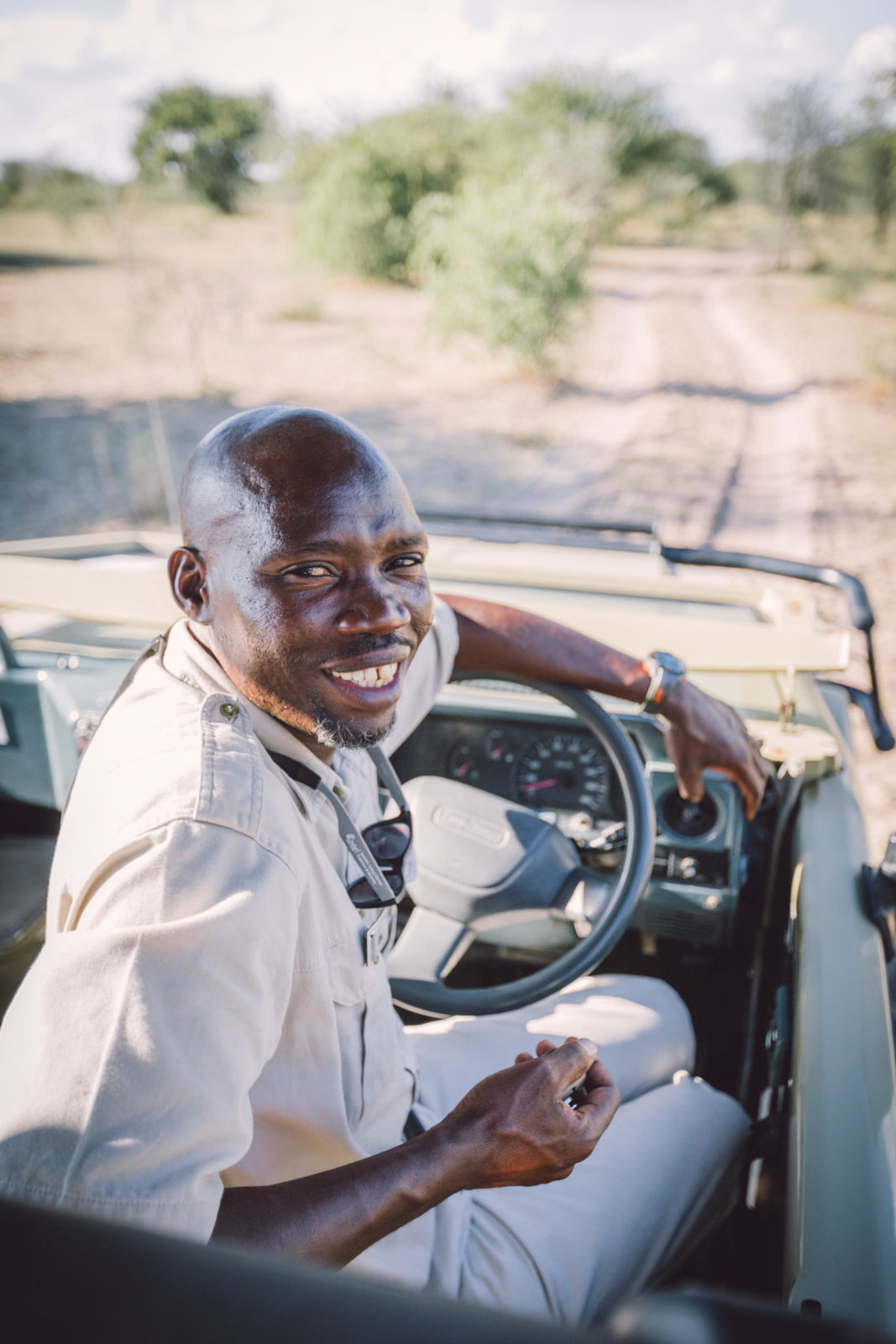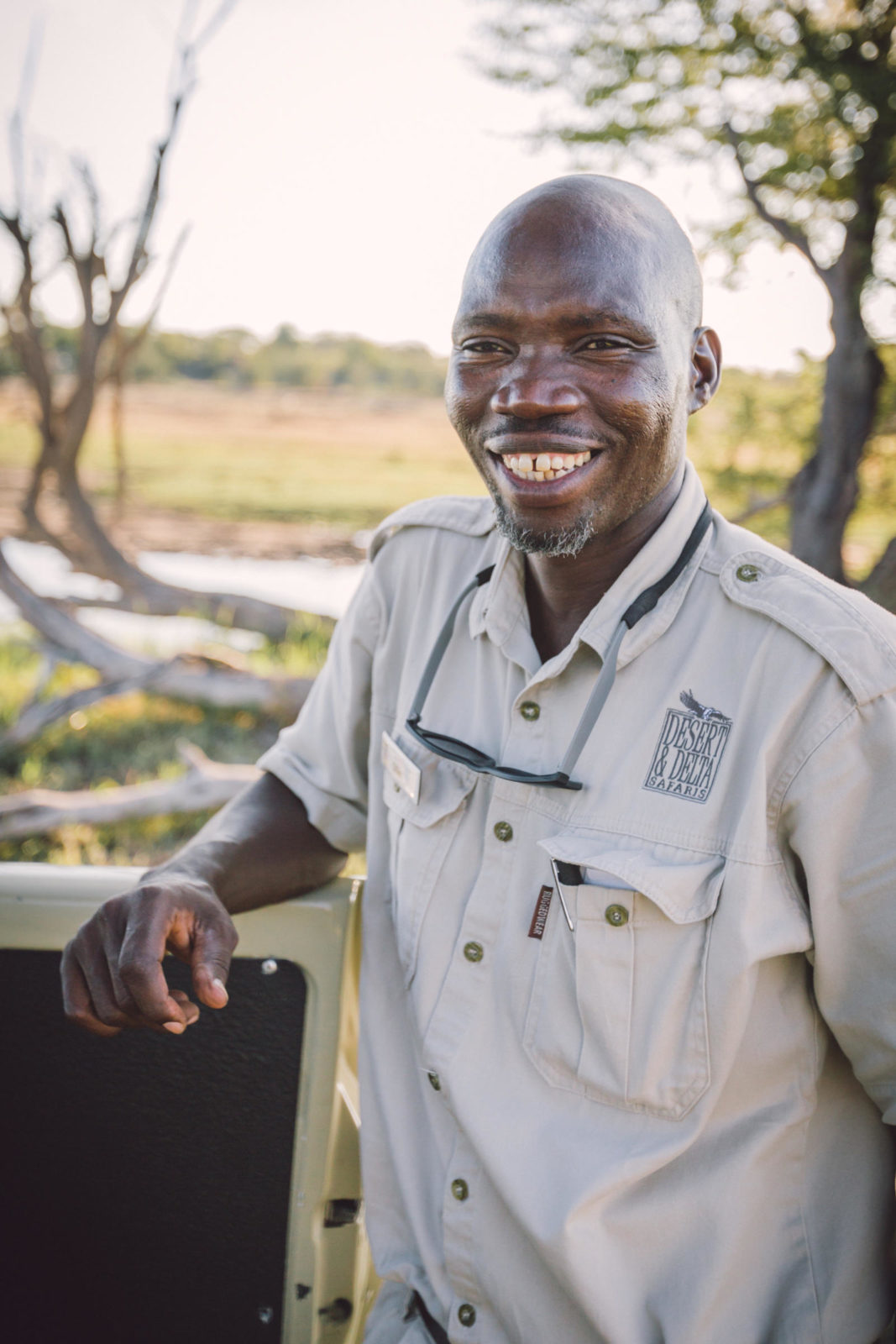Meet Olepeng Maitapiso –or simply “Ollie” who hails from a town deep within the Okavango Delta and has been with Desert and Delta for over twelve years. By Mana Meadows.
Ollie’s roots may be buried deep amongst the wetlands and lily pads of the Okavango Delta but his heart is with the dry scrubland of the Boteti region, a little-explored wilderness which he is proud to call home.
“Working here is quite amazing because it’s totally different from where I was born. Looking at the habitat – at the animals, they’re different. Because in this area you will find animals like springboks, oryx and also brown hyenas. Way down in the delta where I was born you can’t find those animals there because it was too wet for them.”

Over the years Ollie has worked in many wilderness areas of Botswana. Still, the Boteti region holds a soft place in his heart. “Botswana is not all about Okavango Delta and Chobe so people should explore these other areas. I would say they should explore other areas like
Makgadikgadi and Kalahari and also Nxai pan because these areas are totally different to the delta. The plants and animals are so different.”

The Boteti region is famous for its zebra migration – over 25 000 zebra migrate to the Boteti river in the dry winter months. “The best time to come for zebra migration is after the rain stops, for example in May, when the migration starts to come back. And sometimes you find it changes because of the rain. So this year we had an early migration because we didn’t have enough rain – in the pans there is not enough water, so the zebra came back. But sometimes if there is a lot of water, like for example if it rains in Nxai pan where they migrate to, their migration back here will be late.”
Aside from the zebra, a big highlight for him which he feels is often overlooked is the large population of white-backed vultures. The birds live in large numbers along the riverbed, taking advantage of the kills during the zebra migration when food sources are good. “They raise one chick. Put all energy into that one baby and because of the good food supply they can raise their chick very well. Once the chick is raised they stay behind as a family. They look after the chick for maybe eight months.”
Visit our Leroo La Tau page and Makgadikgadi Pans National Park page for more information about the Leroo La Tau experience.